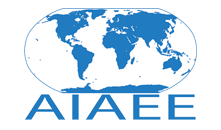Keywords
genetic modification science, critical thinking styles, perceived transparency, attitude
Abstract
Consumers’ attitude toward GM science is not only an important factor to determine the industry’s development, it is also a crucial topic across various countries. How people express their judgment of GM science, involves a highly complicated process. Because of this complexity, influence on attitude toward GM science has become a popular research topic and has been examined through various variables. This study sought to examine the effects of critical thinking styles and perceived transparency of GM science on attitude toward GM science. To fulfill the purpose of the research, an online survey was conducted. A total of 1,047 adults across the United States were recruited using non-probability sampling techniques. The results of the study found critical thinking style had a significant impact on the perceived transparency of GM science information and attitude toward GM science. However, consumers with higher perceived transparency of GM science information reported lower attitudes toward GM science than those who had lower perceived transparency. An interaction effect of critical thinking styles and perceived transparency of GM science on attitude toward GM science was found. Further research examining perceived transparency was recommended. In addition, it was recommended that extension agents or agricultural communicators could develop various communication strategies based on various attribution of consumers.
Rights Statements
This Item is protected by copyright and/or related rights. You are free to use this Item in any way that is permitted by the copyright and related rights legislation that applies to your use. For other uses you need to obtain permission from the rights-holder(s).
Recommended Citation
Wu, Y.,
Rumble, J. N.,
Lamm, A. J.,
&
Ellis, J. D.
(2020).
Communication of Genetic Modification Science: Consumers’ Critical Thinking Style, Perceived Transparency of Information, and Attitude.
Journal of International Agricultural and Extension Education, 27(2), 49-61.
DOI: https://doi.org/10.5191/jiaee.2020.27249



